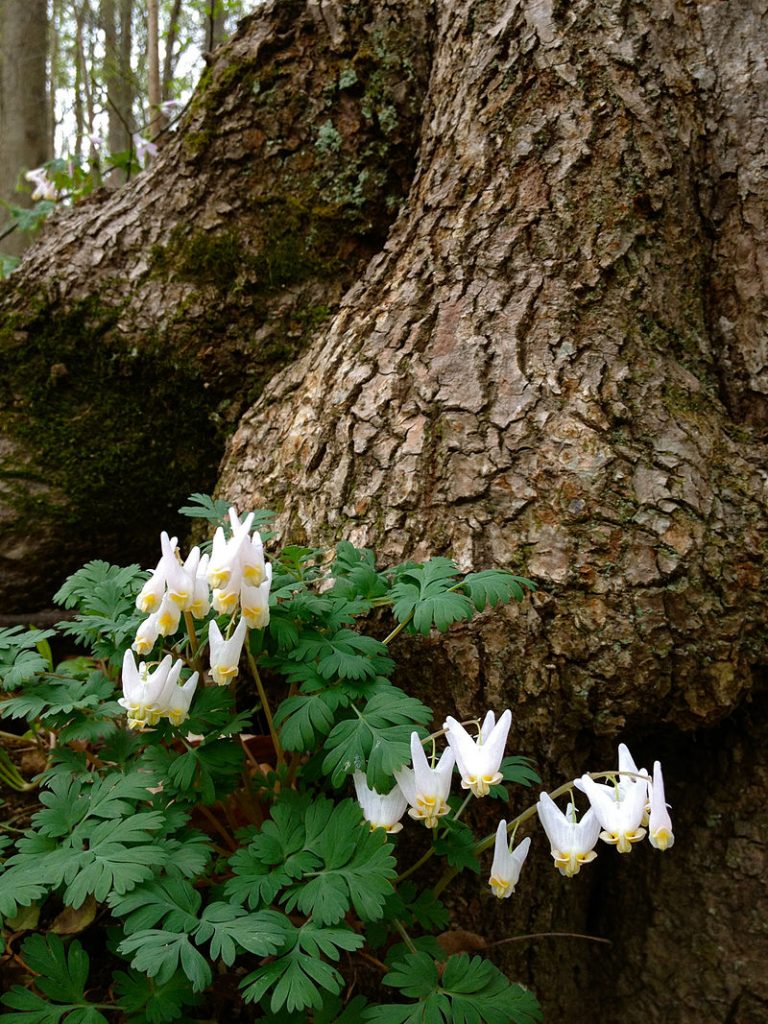
Native to moist rich woodlands of eastern North America and the Columbia Basin in the Pacific Northwest, this herbaceous perennial is a spring ephemeral and a member of the fumitory family, Fumariaceae, that also includes bleeding heart, squirrel corn, and Corydalis. The plant grows up to 12″ tall from a rootstock of pink to white teardrop-shaped bulblets and forms a basal clump of triangular-shaped, grayish-green leaves. The leaves are 3-6″ long, deeply cut and fern-like, and have petioles that are 2-9.5′ long. Racemes of 3-14 flowers appear on arching leafless stems in early spring. The flowers are 1/2-3/4″ ” long , usually white tipped with yellow, and have two spurs formed from inflated petals that create the appearance of upside-down pantaloons. Slender, oval fruits 1/4-5/8″ long appear from late spring to early summer, split open and release many kidney-shaped seeds. The flowers are pollinated by bumble bees, and the seeds are dispersed by ants before the plants become dormant in summer. Dutchman’s breeches are unique plants and valued for use in woodland, native plant, pollinator, bee, wildlife and shade gardens but should be planted with annuals or perennials that provide interest in summer when they go dormant. All parts of the plant are toxic to both humans and animals but severity is considered low. Cattle that graze on Dutchman’s breeches may develop a drunken staggering gait giving rise to the common names staggerweed and little blue staggers. The genus name, Dicentra, is from the Greek δι- (di-) meaning two, and κέντρον (kéntron) meaning sharp point, and refers to the two spurs of the flowers. The specific epithet, cucullaria, comes from the Greek word κουκούλα (koukoula) meaning hood and refers to the appearance of the flowers.
Type: Herbaceous perennial
Bloom: Clusters of white pantaloon-like flowers in early spring
Size: 3-12″ H x 6-12″ W
Light: Part sun to shade
Soil: Fertile, humus rich, moderately moist, well-drained
Hardiness: Zones 3-8
Care: Low maintence
Pests and Diseases: None of significance
Propagation: Division of crown and tubers in fall or early spring; seed immediately after available or after storing and 2-3 months moist chilling.
Companion Plants: Blood root, spring beauty, Canadian wild ginger followed by hosta and ferns
Outstanding Selections:
‘Pittsburg’ (turns pink under certain conditions)
‘Pink Punk’ (more consistently pink than ‘Pittsburg’)
Photo Credit: Fritzflohrreynolds Wikimedia Commons